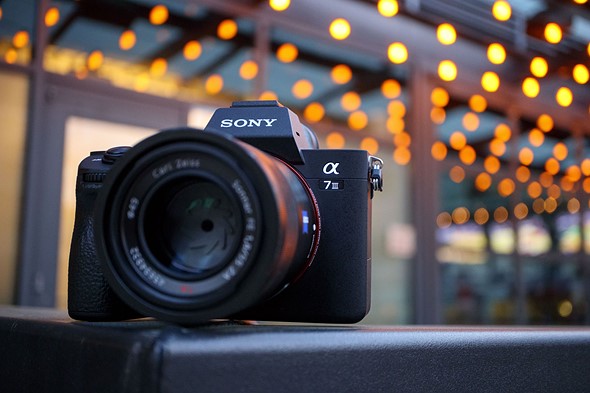Sony hasn’t just improved one or two aspects of its A7S series; with the new A7S III, it’s made an across-the-board set of upgrades that result in a camera that’s the best of its kind. It handles beautifully for video thanks to its articulating screen and touch display, while a full-sized HDMI port and excellent IBIS head the list of other treats. It’s significantly dearer than the A7S II was when it launched, but if you’re a videographer in need of big physical pixels and excellent low-light performance, this is as good as it gets. Read the Sony A7S III review here.
Sony A7S III Review
Key specifications
- 12MP BSI CMOS sensor
- Bionz XR processor
- On-sensor phase detection
- ISO 80-102,400 (expandable to 40-409,600)
- 9.44M-dot EVF with 0.91x magnification
- 4K video at up to 120p, 60p for ‘at least an hour’
- 16-bit Raw video output at up to 60p
- 10-bit 4:2:2 internal capture (in codecs including H.265 and All-I H.264)
- Fully articulating LCD
- 5-axis in-body stabilization with SteadyShot active mode
- Twin card slots that each accept either SD or CFexpress Type A
The Sony a7S III sell for around $3500. This is a $500 premium over 2015’s Mark II but still $500 lower than the launch price of the Panasonic Lumix DC-S1H, which we see as its closest competitor.
Performance
After testing the sensor dynamics, the Sony A7S III has a DXOMARK sensor rating of 86. That places it in 53rd position in our database of full-frame 35 mm and MF sensors overall, 51st place for full-frame 35 mm, and in 17th place for Sony cameras.
As for the three component metrics, the 12 MP Sony A7S III sensor has good maximum color depth, as noted in our Portrait category, measured at 23.7 bits at its minimum ISO 80 base setting, and at the lower ISO 40 expanded setting. The Sony sensor also performs well in our Landscape category, where it has a wide maximum dynamic range of 14 stops (13.9 EV) at the same minimum ISOs.
However, while it’s a good performer at low ISOs, it’s at high ISO values where the most significant benefits of this sensor lie, as we will see later.
In our low-light ISO (Sports) category, which is an indicator of image quality at high sensitivities, the Sony A7S III measures a mid-to-high 2520 ISO value.
Overall, the Sony A7S III BSI-CMOS sensor has relatively high maximum color depth, good dynamic range at base (albeit optimized for high ISOs), and low noise at all ISO settings. Bear in mind that the sensor results are derived from RAW stills, and not from movie footage; however, we still view the results as being relevant when comparing with other models.
Image quality
The sensor rating of 86 places the Sony A7S III a little below the 24 MP BSI CMOS sensors, such as those found in the Sony A7 III, the Nikon Z 6, and the Panasonic Lumix S1, which is around 2/3 of a stop lower in overall sensitivity. Given the large pixel size and state of the art BSI CMOS tech, evidently there’s been some concession made to high ISO performance.
As a BSI CMOS sensor, particularly one that’s optimized for sensitivity, it’s well down our rankings. However, that has more to do with optimization for low-light stills and movie capture than with maximizing dynamic range and color depth for added versatility during post-capture manipulation.
Against its predecessor, it’s almost identical in overall sensitivity, with the two having practically the same DXOMARK rating. While color sensitivity is similar at base, there’s a useful increase between ISO 1600 and 6400. However, mid-tone noise levels are slightly higher at all ISOs in our SNR 18% tests.
Another benefit is the Sony A7S III sensor has a useful 2/3rds of stop (+0.7 EV) extra dynamic range (DR) at base, as well as a dramatic increase in DR of 1.5 stops (+1.5 EV) at ISO 1600. That’s not without some downsides, however, the most significant being that the rate at which DR decreases in between is higher than on the A7S II, meaning that DR is actually lower in the A7S III between ISO 200-400, and there’s no advantage beyond ISO 12,800.
When compared with the 20 MP Canon EOS-1DX Mark III, a DSLR that also combines impressive stills and video capabilities, the Sony A7S III sensor is around a 1/3 stop lower in sensitivity overall. The Canon sensor has both higher maximum color depth and maximum dynamic range at low ISOs. At higher sensitivity settings, the differences between the two sensors are less noticeable, specifically for the low light (ISO) result.







